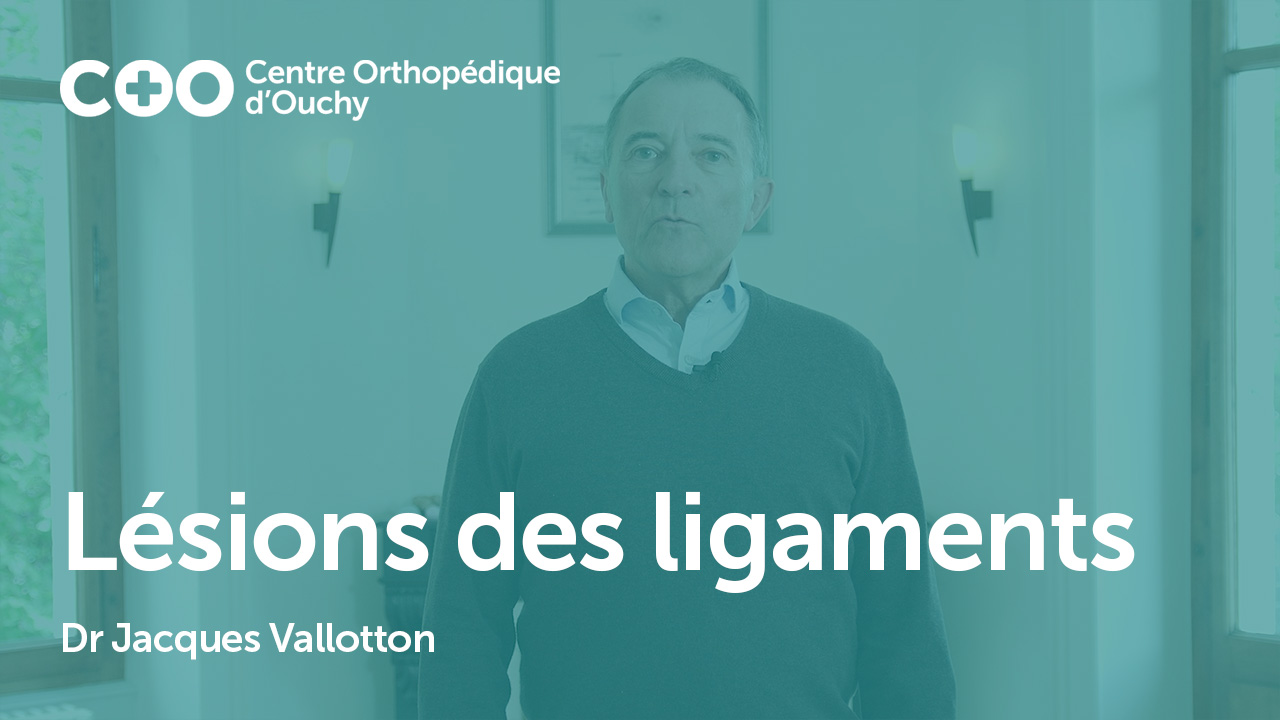Welcome - Knee orthopedist in Lausanne – Pathology: Ligament injuries
Menu
Ligament injuries
The knee is one of the most stressed joints in the human body. It accompanies us in every movement, every step, every stair climb. When instability or pain suddenly appears after a sports injury, it is often a sign of ligament damage. This injury can occur during a pivot movement, a sudden change of direction, or an unbalanced jump landing. Knee ligament injuries are one of the most common injuries in sports medicine and require specialized care to restore optimal function.

Causes
Knee ligament injuries occur primarily during sports involving rapid changes of direction, such as football, basketball, or skiing. The most common mechanism involves rotation of the knee with the foot locked on the ground, creating excessive torsion that exceeds the ligament's resistance. Contact sports also represent a significant risk factor, particularly when direct impacts occur on the joint. This condition affects both recreational and elite athletes, with a predominance in women for certain types of ligament injuries.
Symptoms
A ligament tear manifests itself through characteristic, easily recognizable signs. At the time of trauma, an audible cracking sound often accompanies the injury, followed by an immediate feeling of instability and an inability to continue activity. In the following hours, significant swelling appears, accompanied by pain and limited movement. The sensation of a "knee giving way" when attempting to resume activity is the most characteristic symptom of ligament injuries, particularly of the anterior cruciate ligament.
Treatments
Treatment for ligament injuries depends on several factors, including the patient's age, activity level, and functional goals. For some patients with low-instability activities, conservative treatment combining rest, physiotherapy, and muscle strengthening may be sufficient. This approach requires a specialized rehabilitation program aimed at compensating for the loss of ligament stability through appropriate muscle strengthening. The treatment decision is based on a comprehensive functional assessment that takes into account each patient's expectations and lifestyle.

Surgery
When instability persists despite rehabilitation, or for patients wishing to resume high-risk sports activities, surgical reconstruction may be necessary. This procedure involves replacing the torn ligament with a graft taken from the patient's own tendons. The surgery is performed arthroscopically, allowing for a minimally invasive approach with reduced incisions. The success of the procedure depends largely on the quality of postoperative rehabilitation, which begins early and extends over several months to restore optimal joint function and allow the desired activities to resume.
Want to learn more about ligament injuries?
On our Medicol website you will find additional detailed information.
This article is original and was created entirely by our team of referring physicians. Last updated September 17, 2025.
Our knee specialist
Dr Jacques Vallotton
- Referring Physician
- Specialist in orthopedic surgery and traumatology. SEMS sports physician
Would you like a consultation with one of our doctors?
Do not hesitate to contact us, we will be happy to help you.




